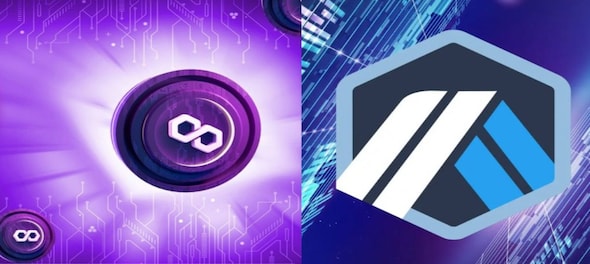
Ethereum is believed to be the most popular blockchain for Decentralized Finance (DeFi) protocols, dApps (decentralized applications), and Non- Fungible Tokens (NFTs). But historically, the network has suffered from congestion issues, high fees, and relatively slow transaction speeds due to a steady increase in the number of users on the network.
Such reasons are why Ethereum scaling solutions have been developed. Although numerous layer 2 solutions have emerged in the past few years, let us examine the two most popular ones – Polygon and Arbitrum. In this article, we will break down the differences between the two from a fundamental perspective.
Technology
The main difference between the two is how they process transactions for the Ethereum network. For instance, Polygon is considered to be both a layer 2 solution and a sidechain. However, its structure is where Polygon stands out. It has a three-layer architecture and is connected to multiple sidechains. Each side chain handles its own transactions, which in turn increases throughput and lowers fees, and increases transaction speed for Ethereum.
A quick reminder here is that sidechains employ their own consensus algorithms and operate independently, but parallel to the mainnet. Polygon is both a layer 2 solution and a sidechain since it uses its own consensus mechanism but also utilizes the main Ethereum layer for some features in its consensus mechanism to improve security.
Meanwhile, Arbitrum is an optimistic rollup designed to enhance Ethereum’s scalability by interacting with the main chain. However, it achieves this through “off-chain execution”, which shifts the computational work required to execute a smart contract or dApp off of the Ethereum blockchain and onto a separate network.
However, Arbitrum inherits Ethereum’s security features and consensus mechanism, unlike Polygon, which employs its own consensus mechanism. The main advantage is that optimistic rollups allow developers to utilize existing Ethereum tooling, which streamlines the onboarding process for developers by making it easier for them to start building applications.
Security
While Arbitrum is secured by Ethereum’s base layer, Polygon uses its “Proof of Stake” consensus mechanism to validate transactions.
In March 2023, Polygon launched its mainnet for the zkEVM solution, which bundles millions of transactions, and processes and validates them off-chain with minimal information while keeping the details hidden. It then sends a compressed summary to the Ethereum mainnet, which enhances scalability and security.
In contrast, the Arbitrum network does not perform this process but assumes that aggregators and block producers in the ecosystem work without cheating. Therefore, it relies on fraud proofs, meaning that computations are only checked if someone complains that the data is invalid. If such a case is found, fraudulent transactions are rolled back, and the fraudster is ejected from the network. However, due to potential fraud challenges, on-chain transactions can have long wait times. On the positive side, it offers much lower computation costs.
Some argue that Arbitrum is a more decentralized network since it is secured by Ethereum’s distributed network of miners whereas Polygon is secured through MATIC, which has a much smaller pool of capital.
Consensus Mechanism and Tokens
Both Polygon and Abritrum have their native tokens, but both are used for different functions. As mentioned earlier, MATIC is used to govern and secure the Polygon network. Meanwhile, Arbitrum’s native token, ARB, is only used for governance of the Arbitrum Decentralized Autonomous Organization (DAO).
There are a few other differences between the two networks. Let us consider withdrawal time, which refers to withdrawing tokens from a network. While Arbitrum withdrawals can take about two weeks, the network Polygon can approve withdrawals typically in just three hours. Furthermore, Polygon processes 65,000 transactions per second against Arbitrum, which allows 40,000 transactions per second.
However, Arbitrum does benefit from layer gas fees over Polygon, making it cheaper for people who want to engage with the Ethereum network.
Conclusion
Polygon and Arbitrum tackle the challenges of scalability and security on Ethereum networks in their own ways, but both are popular. While Arbitrum has over 200 live projects, Polygon has over 19,000 dApps. When it comes to greater scalability and building complex solutions, Polygon is the more reasonable choice. In contrast, when it comes to security, many prefer Arbitrum.
Check out our in-depth Market Coverage, Business News & get real-time Stock Market Updates on CNBC-TV18. Also, Watch our channels CNBC-TV18, CNBC Awaaz and CNBC Bajar Live on-the-go!


Supreme Court dismisses plea seeking postponement of CA exams; details here
Apr 29, 2024 2:29 PM
Just 8% women candidates contested first two phases of Lok Sabha polls
Apr 29, 2024 12:00 PM
The sexual assault case against Prajwal Revanna — here's what we know so far
Apr 29, 2024 11:36 AM
Repolling underway at one polling booth in Chamarajanagar LS segment in Karnataka
Apr 29, 2024 10:32 AM

